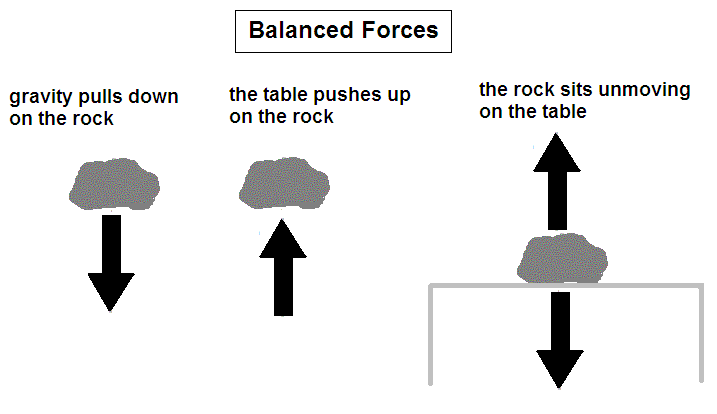
When an unbalanced force acts on an object, it will accelerate. When the force is in the same direction as the motion, the speed changes.
We met an example of this in the previous unit, where it was found that the acceleration of a ball rolling on an inclined ramp is constant. There is an unbalanced force on it; we would have to exert a force to keep the ball in place. This suggests Newton's Law of Force and Acceleration,
Net Force (on the object) = mass (of the object) * acceleration (of the object)
which says that whenever there is an unbalanced force (that is, a force that is not being canceled out by an opposing force on the object), an object will accelerate in the direction of the force, and that massive objects are harder to accelerate than light-weight ones.
An example is a falling ball. The only important force acting on the ball is its weight. This constant downward force gives rise to a constant downward acceleration, with the result that its downward speed increases, or its upwards speed decreases. This is a special case, because the weight (which becomes the Force in the equation) is proportional to the mass (which appears on the other side of the equation). The result is that all falling objects have the same acceleration, no matter what their mass. The gravitational force is larger on a heavy object, but it takes a larger force to make it accelerate. This is also the explanation of the tie result in the rolling race: the larger ball has a larger force acting on it, but also more inertia.

|
| Photograph by Amber Wiener |
Balanced forces and unbalanced forces
To make clear what role Newton's Laws play, let us consider a simple situation, in which nothing is happening at all: a rock sitting on a table.
The gravitational force acts all the time. The rock has the same weight that it always does. However, if the tabletop is level, the rock does not move. The gravitational force is downwards (by definition!), and the rock can't move in this direction, because the table is already there. To prevent the motion of the rock, the table is pushing upwards: the gravitational force has been cancelled out. We say "the forces are balanced." Likewise, when we weigh an object the forces are balanced: the gravitational force is down, and the force scale is pulling up. What the force scale is really telling us is how hard it has to pull to keep the object in place.

The Law of Force and Acceleration is usually called Newton's second law; the Law of Inertia is Newton's first law, and the Law of Interaction is Newton's third law.